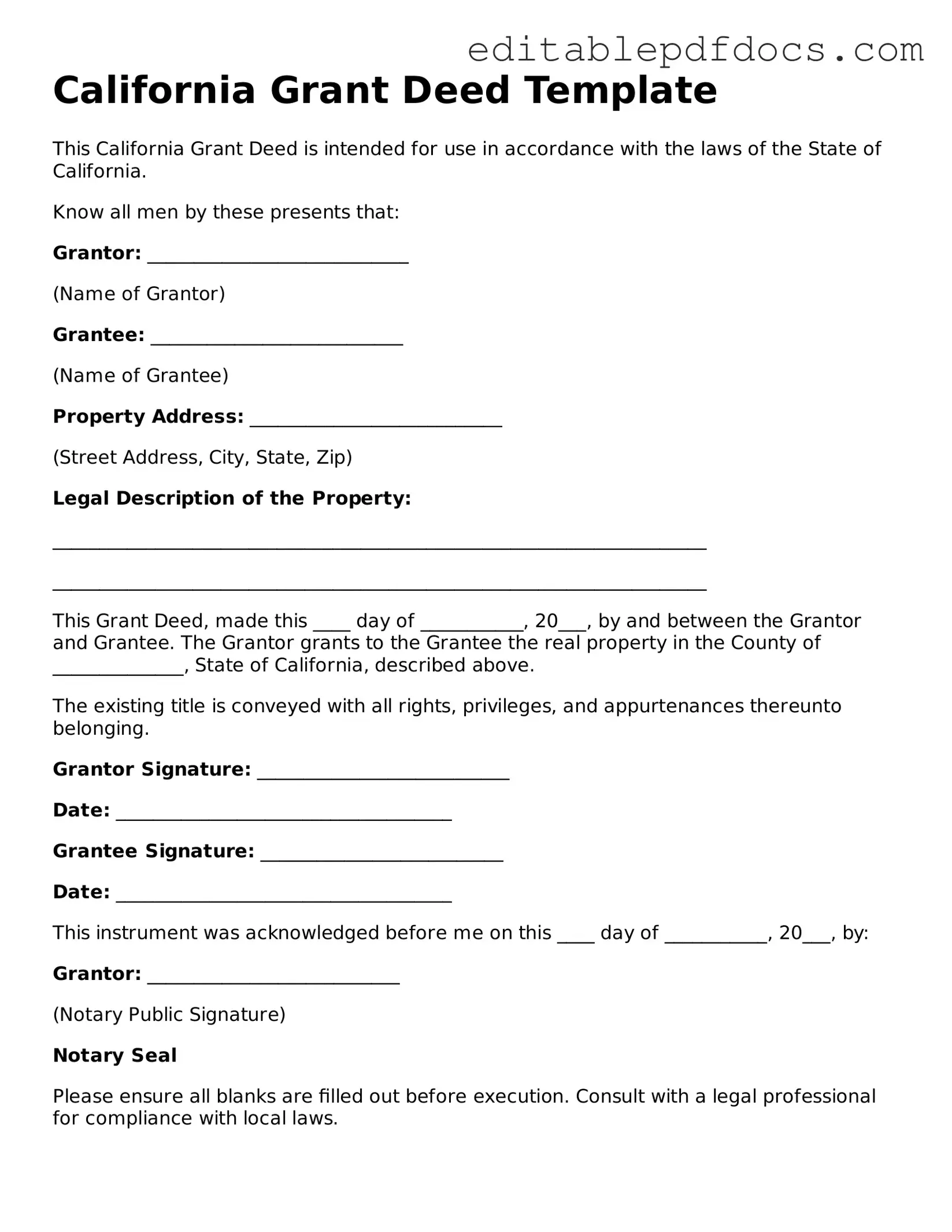In the realm of real estate transactions, the California Deed form serves as a crucial document, facilitating the transfer of property ownership from one party to another. This form is not merely a piece of paper; it encapsulates vital information such as the names of the grantor and grantee, a detailed description of the property, and the terms of the transfer. Understanding the nuances of this form is essential for both buyers and sellers, as it ensures that the transaction is legally binding and protects the rights of all parties involved. Additionally, the California Deed must be properly executed and recorded to be enforceable, which underscores the importance of adhering to state-specific requirements. Whether you are a first-time homebuyer or a seasoned investor, grasping the key elements of the California Deed can significantly impact the success of your real estate endeavors.
